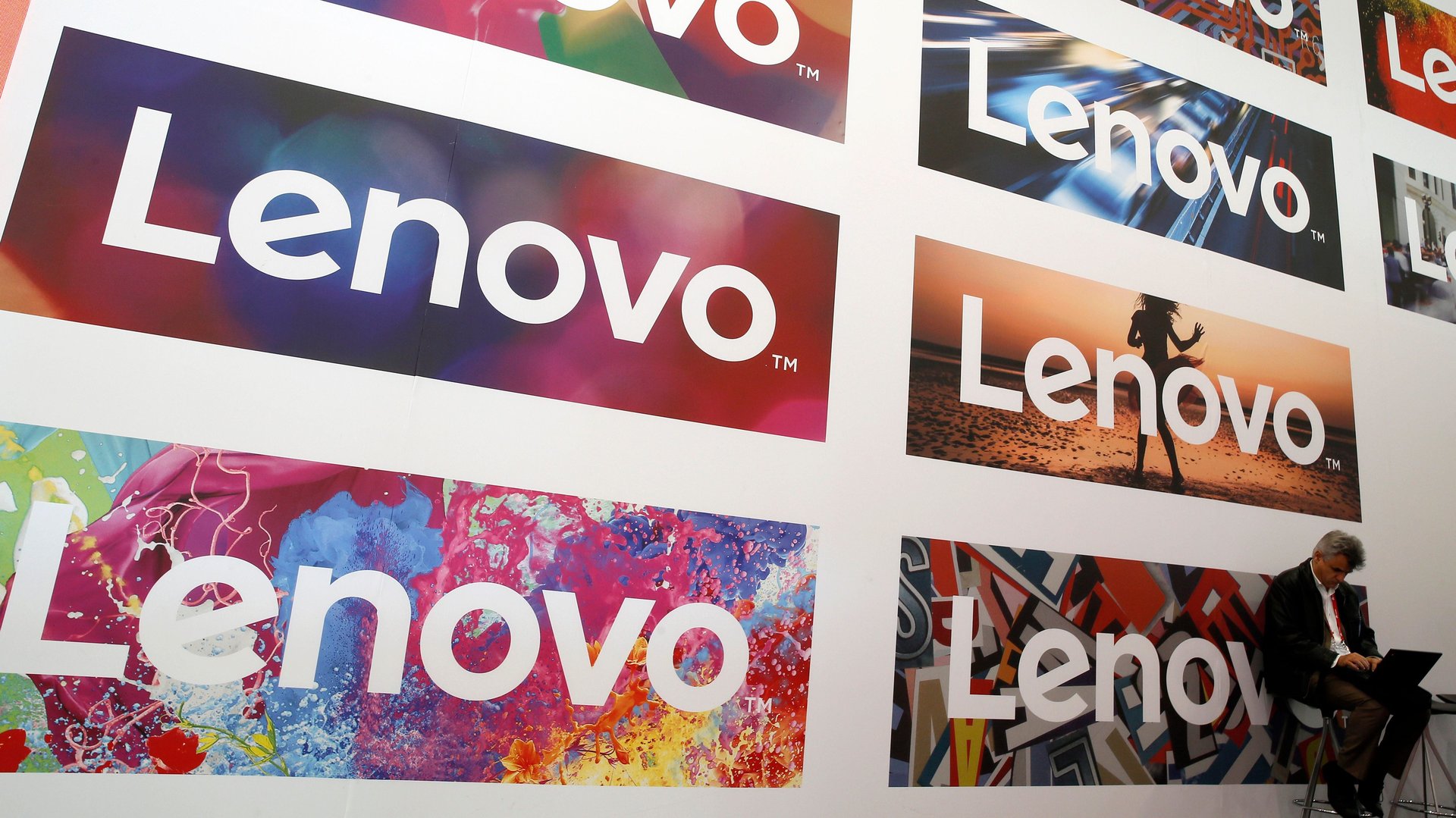Why Lenovo thinks India’s smartphone obsession is good for PC sales
Millions of internet users in India have never used a personal computer (PC) and accessed the web through cheap smartphones only. Yet, Hong Kong-based Lenovo is betting big on PCs in the world’s second-largest smartphone market.


Millions of internet users in India have never used a personal computer (PC) and accessed the web through cheap smartphones only. Yet, Hong Kong-based Lenovo is betting big on PCs in the world’s second-largest smartphone market.
The company currently holds the third-largest market share of India’s small PC market, where just 2.25 million devices were sold in the second quarter of 2018 as compared to 33.5 million smartphones.
Lenovo gets its confidence from its growing popularity. “Last year we witnessed fairly meteoric growth. Our PC business grew 43% while the market grew just 5%,” said Rahul Agarwal, CEO and managing director at Lenovo India. “In the first half of this year, too, we were following a similar trajectory.”
Meanwhile, Lenovo has lost the smartphone race in India. The company, which sells both Motorola and Lenovo branded phones here, temporarily stopped retailing the latter about a year ago amid rising competition. But in early November, it released two new models under the brand—the Rs5,999 ($83) A5 and the Rs8,999 K9.
“With Moto, we’ll do both online and offline,” said Agarwal. “I think Lenovo, we are still testing and we are still forming our decision on should we play dual brands or should we put all our bets in one.”
Quartz spoke to Agarwal about Lenovo’s past, present, and future in India.
How has Lenovo’s smartphone business in India done?
Last five years have been slightly tough after we bought Motorola. It typically takes four to five years to stabilise a new acquisition. Even when we had bought the server business of IBM, it took some years to stabilise. The mobile industry is very tough and very dynamic; the number of players is way too many. But now things are turning around for Moto. We are now finding a place and we’re choosing where we want to play. India is among the top five or six markets for Lenovo.
Do you think it’s best for smartphones in India to be sold online or offline?
You have to do both. It’s a very interesting market; 75% of the market has been taken by the top five players—Xiaomi, Samsung, Vivo, Oppo, and Realme. And Oppo, Vivo, and Realme are actually just one company: BBK. The rest hold really small percentages. Now if you are that small, you can decide to either play offline or online. If you’re a big company, you have to play both. But the danger of being only online is that you can get wiped out in no time.
What makes you bullish on your PC business in this smartphone-first country?
The PC market in India hasn’t gone down—globally, it has. I’m hoping that the growing smartphone market will bring people closer to the idea of buying a PC. Once people get a taste of the internet through the smartphone, their appreciation of technology and a larger screen with better economic status may lead them to buy more PCs later on.
Has the Make in India policy helped PCs?
If I look at PCs, we do have a factory in Puducherry but we still import a large part of our PCs. We’re not finding more incentive to manufacture in India, for one. Secondly, the ecosystem to manufacture is not developing. We can import and assemble, which is what we do, but real manufacturing is when the hard disk gets manufactured here, the RAM gets manufactured here, the chipset gets manufactured here, and the graphics card starts getting manufactured here.
So, we feel that Make in India has not really worked that much for the PC. It has worked very well for phones. It is now not financially feasible to import phones because you have to pay certain customs duties. When you manufacture, the excise duty is almost 8% lower. For PCs, whether you manufacture or import, the duty is the same.
What else can the government do to help?
The country needs to do a lot more on education. The need for skilling is at two levels. One is very rudimentary where you take somebody totally unskilled and teach him how to repair a TV or a scooter. On another level, with IT, you need digital skilling. The government has a vision but we think companies can play a big role. If more and more middle class and lower-middle-class students have PCs, we feel their horizon, their perspective, and their ability to make a career will improve. We feel the government should, therefore, even think of giving tax breaks for students who buy laptops.
After phones and computers, what’s the next frontier for growth for you?
The tech landscape is changing rapidly. The IoT (internet-of-things) ecosystem is exploding. You’ll soon have smart IoT devices like a chip in your shoe or your spectacles or your washing machine. But the smart device market is a niche market. That is for the early adopter; it is not for the mass market. Which is why you don’t see a plethora of products in India yet. It’s why you see Google and Amazon trying to build the whole market at very affordable prices. They’re trying to build the market and for us. It makes sense to jump into it once the market is built to an extent.